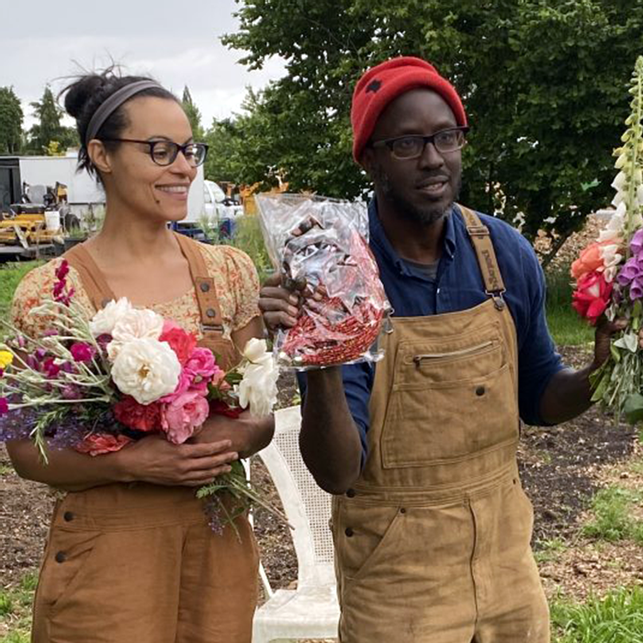Garden tips for spring into summer
by Beta Vulgaris
As spring fades to a sweet memory and summer heat arrives, vegetable gardeners face the challenge of a major transition. To get the most from your community garden, try these tried and true tips:
• Harvest cool season crops before they go bad in the heat. Cut your spinach, lettuce, and other spring crops before the heat of summer makes them bolt or turn bitter (as they will – count on it!) This is especially important in warm parts of the country. If plants hate the heat or get sick, out they go. They are taking up valuable space you need for growing food.
• When the sugar peas are done, turn them to mulch and immediately plant something like sweet potatoes or cukes that loves the summer sun.
• Make yourself wait until the risk of cold weather has passed before you set out warmth lovers such as peppers, eggplants, squash, and (especially) sweet potatoes. Yes, the planet is warming overall (and we all need to do something about it!) but this can lead to unpredictable swings in weather patterns, including cold spells in spring. Sitting out in the cold can lower yield and disease resistance in heat-loving plants.
(I find row covers help, but only a little, and the same goes for black plastic mulch. I’m torn about continuing to use plastic “mulch” anyway – yes, it is a staple for commercial squash growers, including organic ones; but it increases the amount of plastic in the biosphere, something I think we all need to do less of. We’ve got to consider the environmental impacts of our actions, and change old habits when necessary.)
• As you harvest spring crops fill in empty spaces with buckwheat. This user-friendly cover crop outcompetes weeds, captures nutrients, and blooms to attract pollinators. Make sure you’ve got a bag of seed available for you and other gardeners. We keep a pound or two in our community garden shed.
• Don’t forget flowers. Summer is prime time for blooms, from tall graceful sunflowers to lacy cosmos. Flowers add beauty to beds, always important for community gardens, plus increase feeding options for beneficials and birds.
• Think ahead. In the north and maritime climates, places where you can grow broccoli all summer, keep the relay going. The goal is to always have something to eat (or contribute) fresh from the garden. In warmer areas, where summer crops such as tomatoes are followed by a fall season of cool weather crops, make sure you think about where the new crops will go.
• To ensure space, draw out a garden plan on paper, with a calendar. Make a note about long-termers, such as peppers. I’ll keep picking peppers right up until frost, so obviously the fall cabbages can’t go in the pepper patch.
• Stay COVID safe. No, this isn’t on the usual garden checklist for the spring/summer transition, but for all community gardeners, we need to be proactive. Obviously, it’s for the health of our gardeners, but we also want to set a good example for our communities. Sponsoring organizations will be grateful as well. Listen to the science.

